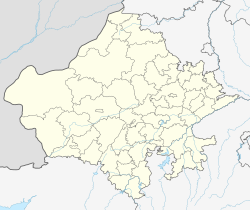Sarsop | |
|---|---|
| Coordinates: 26°09′41″N76°04′33″E / 26.161271°N 76.075819°E | |
| Country | |
| State | Rajasthan |
| District | Sawai Madhopur |
| Population (2011) [1] | |
• Total | 5,356 |
| Demographics | |
| • Literacy | 59.77 |
| • Sex ratio | 963 |
Sarsop village is located in Chauth ka Barwara tehsil of Sawai Madhopur district, Rajasthan, India. [2]
There is a famous and grand temple of Chamunda Mata in Sarsop village on top of the fort

